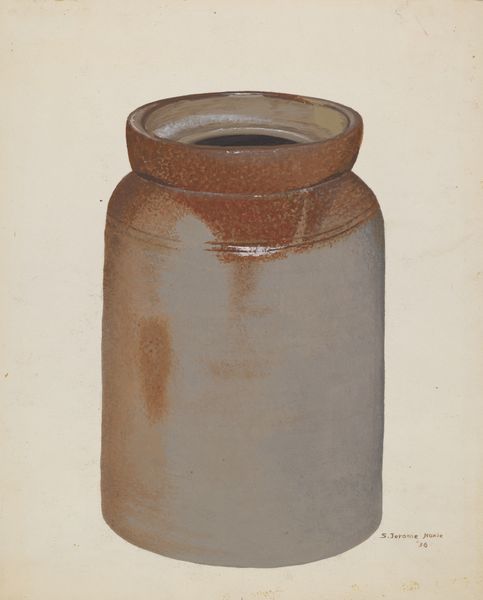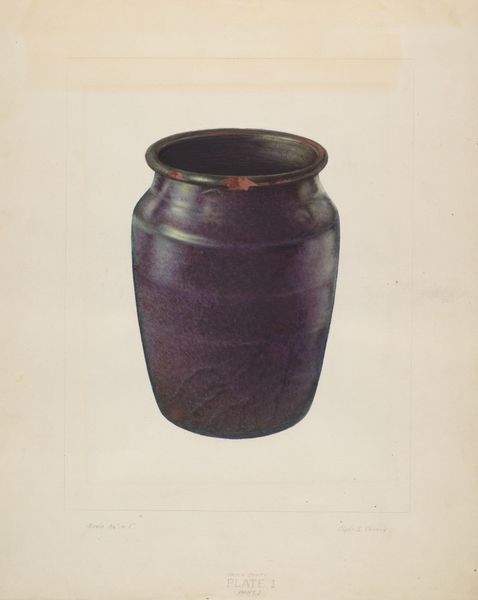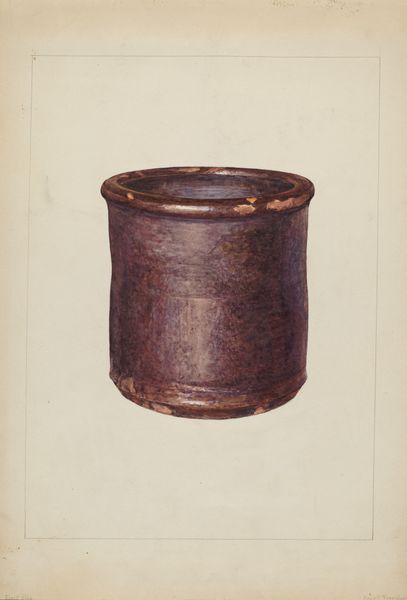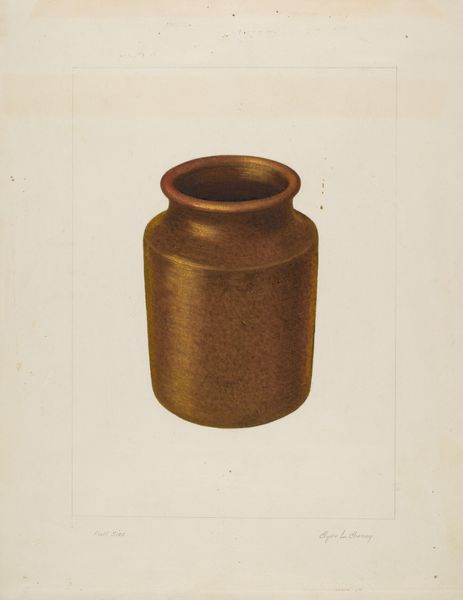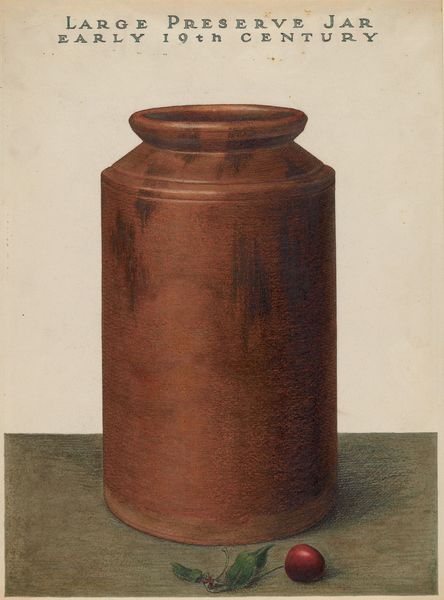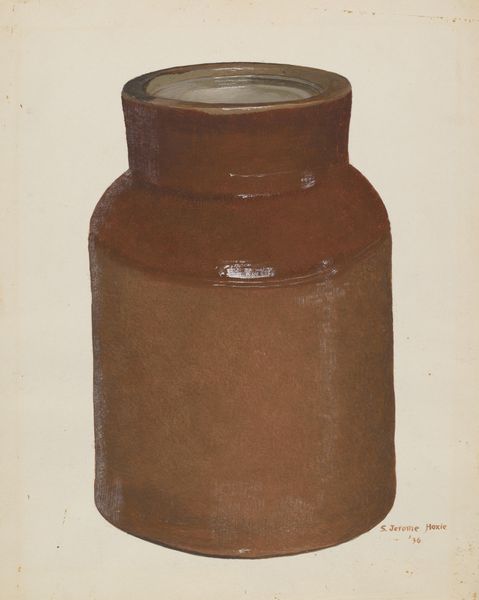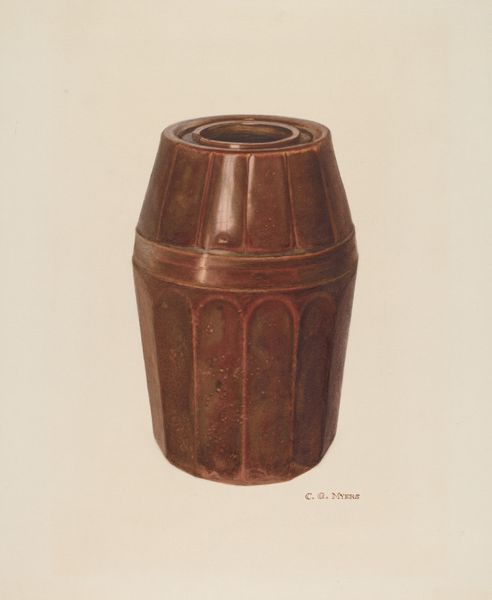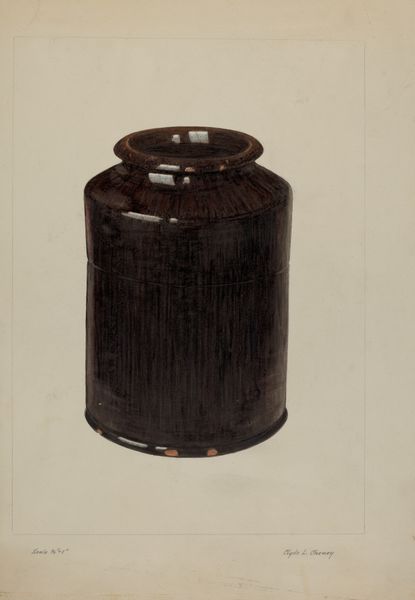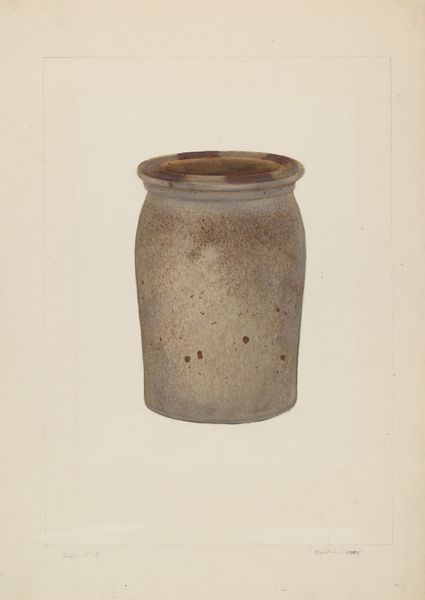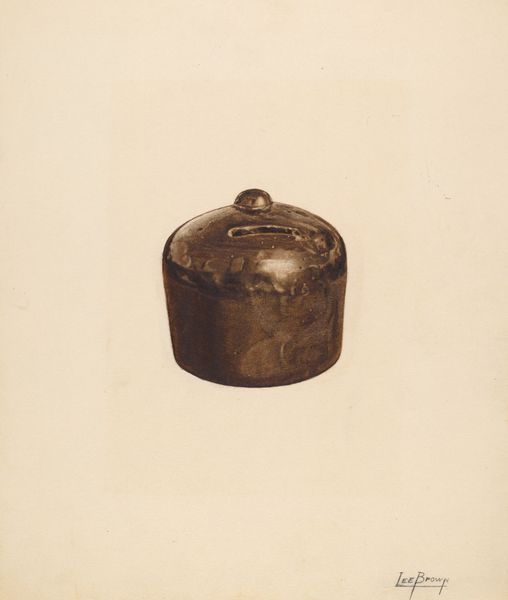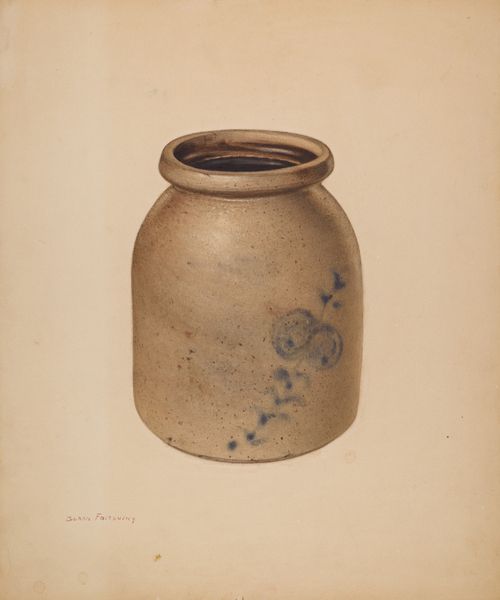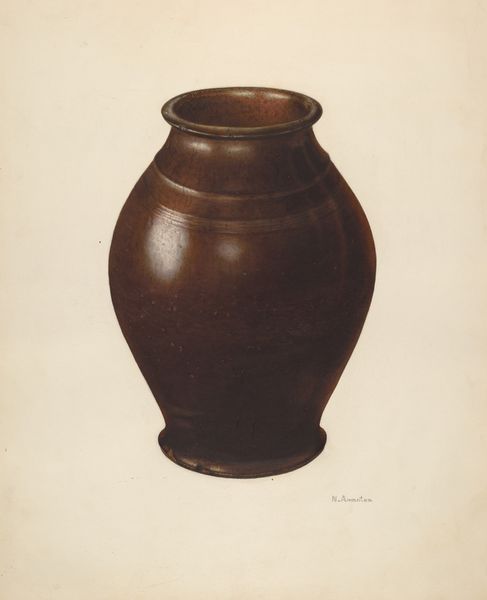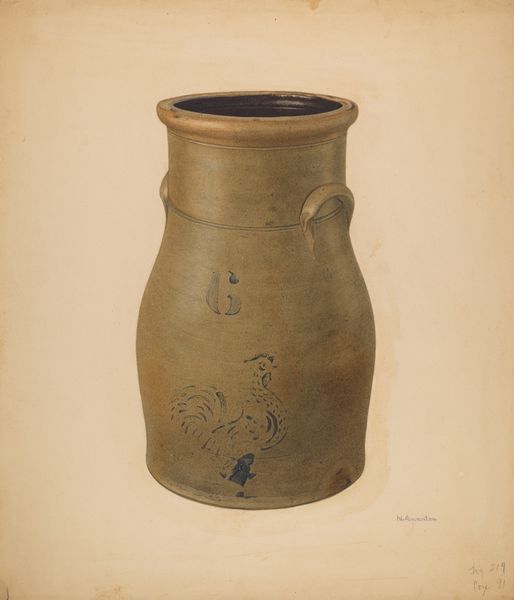
drawing, painting, ceramic, watercolor
#
drawing
#
painting
#
ceramic
#
watercolor
#
ceramic
#
watercolour illustration
#
watercolor
Dimensions: overall: 27.9 x 22.7 cm (11 x 8 15/16 in.) Original IAD Object: 8 1/2" High 4 1/2" Dia.(top) 5 3/4" Dia.(base)
Copyright: National Gallery of Art: CC0 1.0
Curator: Welcome. Today we are looking at "Preserve Jar" by Jerome Hoxie, made in 1936. It’s a humble object, rendered in watercolor, likely on paper, showing a ceramic jar. Editor: There's a stillness to it, almost melancholic. The earth tones are very muted and I'm drawn to the slightly uneven coloring. Curator: I’m interested in that exact color. That simple act of preserving food—the canning process, the access, the actual jars, often made locally. Consider the labor, usually gendered female, involved in procuring and preparing food in that era. Was it self-sufficiency, forced scarcity, or just a cultural tradition? Editor: All those aspects you mention resonate. The jar itself suggests sustenance, but also speaks to the cyclical nature of time and domestic labor. What exactly are they "preserving," though? That act has heavy implications considering the economic backdrop of the time. Curator: Precisely! Watercolor offers a very direct and accessible technique—economical both in material and method, mirroring the Depression Era ethos of functionality and making-do. Also, I’m curious as to why the artist painted it, rather than working with clay and making a jar instead of portraying it. Editor: That’s a poignant question. Perhaps it's a quiet comment on societal roles – documenting rather than actively creating? This jar symbolizes an idealized domestic space, while the abstract dark shapes on its surface imply underlying tensions. Is that the "outsider" trying to get in, I wonder? Curator: Interesting parallel! I see now the visual dialogue between a high art medium like watercolor painting and the more quotidian object it represents. Hoxie draws attention to a functional craft and lifts it— through paint—into the realm of art, which itself invites the conversation on access to food, and access to cultural capital, which is as essential as anything edible, right? Editor: Absolutely. It’s an invitation, perhaps, to consider the lives often unseen, to really witness and question the labor that supports the broader community, past and present. The artist gives it due recognition by putting it in paint on paper. I think I initially saw something melancholy in this humble piece because of the silence embedded in all those implications of struggle. Curator: Ultimately, viewing something like this “Preserve Jar” encourages reflection and perhaps an activist stance to recognize the hands that built our own dinner plates and our own culture. Editor: And to understand the depth and implications of simple representation.
Comments
No comments
Be the first to comment and join the conversation on the ultimate creative platform.
